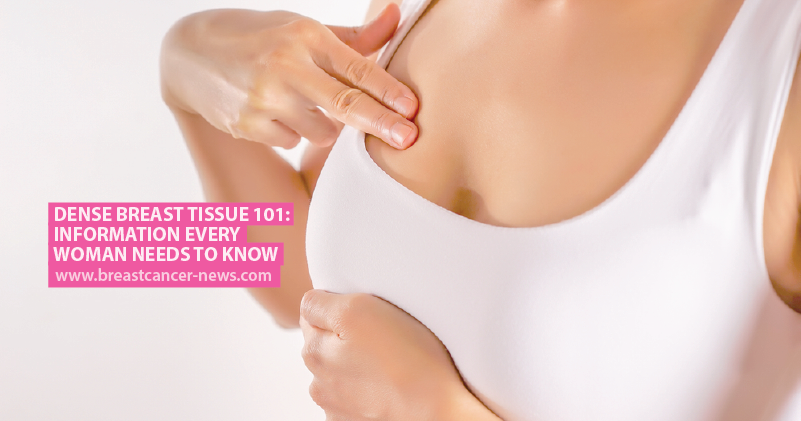If someone calls you “dense” during your breast cancer screening, don’t take offense! It’s a term used to describe certain kinds of breasts.
“Dense breasts” are common and normal, but that condition can make it more difficult for medical professionals to spot cancer.
First, a quick primer about your breasts. These amazing body parts are made up of lobules, ducts, and connective tissues. The lobules produce the milk women use to feed babies, and the ducts are the tiny tubes that transfer that milk to the nipple. The other parts are comprised of tissue and fat, the components that give breasts their shape and size.
Breasts are considered “dense” when they don’t contain much fat in comparison to fibrous or glandular tissue. It has nothing to do with the way your breasts look or feel, and only a medical procedure like a mammogram can determine if your breasts fit that category. Breasts of any size can be dense.
MORE: What to know about radiation therapy
What you should know:
According to the American Cancer Society, having dense breasts can slightly increase your risk of developing cancer.
Dense breasts can make it harder for medical professionals to see cancer. On mammograms, dense breast tissue and cancerous tissues both appear white, and naturally that makes the cancer tissues harder to spot. By contrast, fatty tissue looks black, so white cancer cells are easier to see.
What you should do:
Ask your doctor if your breasts are dense. Make sure you understand the answer and how it impacts your risk for cancer.
Get familiar with your body! Ladies, this is no time to sit on your hands. Know how your breasts look and feel so you can report any changes to your doctor.
Have regular check ups. Make sure your medical facility has your records so they can identify changes.
After your mammograms, read your report in its entirety. If you don’t understand it, ask, ask ask. Get a second opinion if you don’t feel confident or can’t get your questions answered.
Find out if you need to supplement your mammograms with an MRI. Candidates for this extra precaution include women with an increased risk of breast cancer.
MORE: Three easy recipes using cancer-fighting vegetables
Breast Cancer News is strictly a news and information website about the disease. It does not provide medical advice, diagnosis or treatment. This content is not intended to be a substitute for professional medical advice, diagnosis, or treatment. Always seek the advice of your physician or another qualified health provider with any questions you may have regarding a medical condition. Never disregard professional medical advice or delay in seeking it because of something you have read on this website.


If you have the highest level of density, you cancer risk increases more than slightly. Women withe highest level are 4-6 times more likely to have breast cancer. They are 18 times more likely to have an interval cancer. Their mammogram may miss cancer in up to 50% of the cases. Women need to know and understand their category of density so they can be proactive. Women need to ask, “What is my breast density?” Until there’s a cure, let’s find it small.